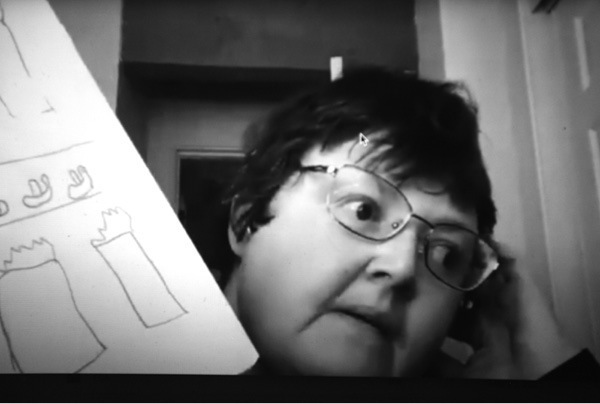
A DISPLACED WONDERLAND
first performed on February 24, 2021
Zoom, hosted by SoundBox4: A Zoom of One's Own at Oregon State University, Corvallis, OR
performed once in 2021
LIVING STUDIOS (AT CORNERSTONE ASSOC.)
Bruce Burris, Julianna Souther, Nat Roadarmel
Corvallis, OR
299393265b299393265b299393265u299393265r299393265r299393265i299393265s299393265@299393265c299393265o299393265r299393265n299393265e299393265r299393265s299393265t299393265o299393265n299393265e299393265a299393265s299393265s299393265o299393265c299393265.299393265o299393265r299393265g
livingstudiosarchive.weebly.com
A DISPLACED WONDERLAND
LIVING STUDIOS (AT CORNERSTONE ASSOC.)
The disability community and/or those who experience disability or identify as neurodiverse are often guided through support services and systems of care that offer limited opportunities for interaction and collaboration with those outside of their direct support system. Living Studios is an art space and collective of artists that partners with our entire community, with an emphasis on artists who identify as neurodiverse, to create cultural, social, and political opportunities for all.
Perhaps surprisingly, the adaptability of the virtual community during the pandemic led to new and unanticipated artistic adventures. In February 2021, the artists of Living Studios choreographed a remote directive and interactive performance over Zoom titled, “A Displaced Wonderland.”
“A Displaced Wonderland” was a remote directive and interactive Zoom performance in which a remote participant called The Stranger followed the directions given to them by Living Studios and other Zoom participants as they explored an unknown (to those of us at home) land.
Throughout the journey in the “Displaced Wonderland,” Living Studios artists, on the other end of the screen, call out instructions to the stranger regarding which way to turn at the split in the trail, when to pause and touch the moss or water. They tell the stranger to stop at the log that crosses the water. The stranger follows the directions of the improvised performance through forest and riparian trail for the duration of the piece. Visual responses to what we see and hear on screen document the choreography of the journey. The multiple viewpoints of our screens, whether they show the forested environment, a drawing of trees, a face of a participant, the Living Studios artspace, or a glimpse of someone’s bedroom, provides evidence that the virtual format can make possible meaningful connection, interaction, and adventure.
For artists who are often guided through their own systems of support, “real time” travel to distant lands results in spontaneous moments of collaboration and autonomous creation.